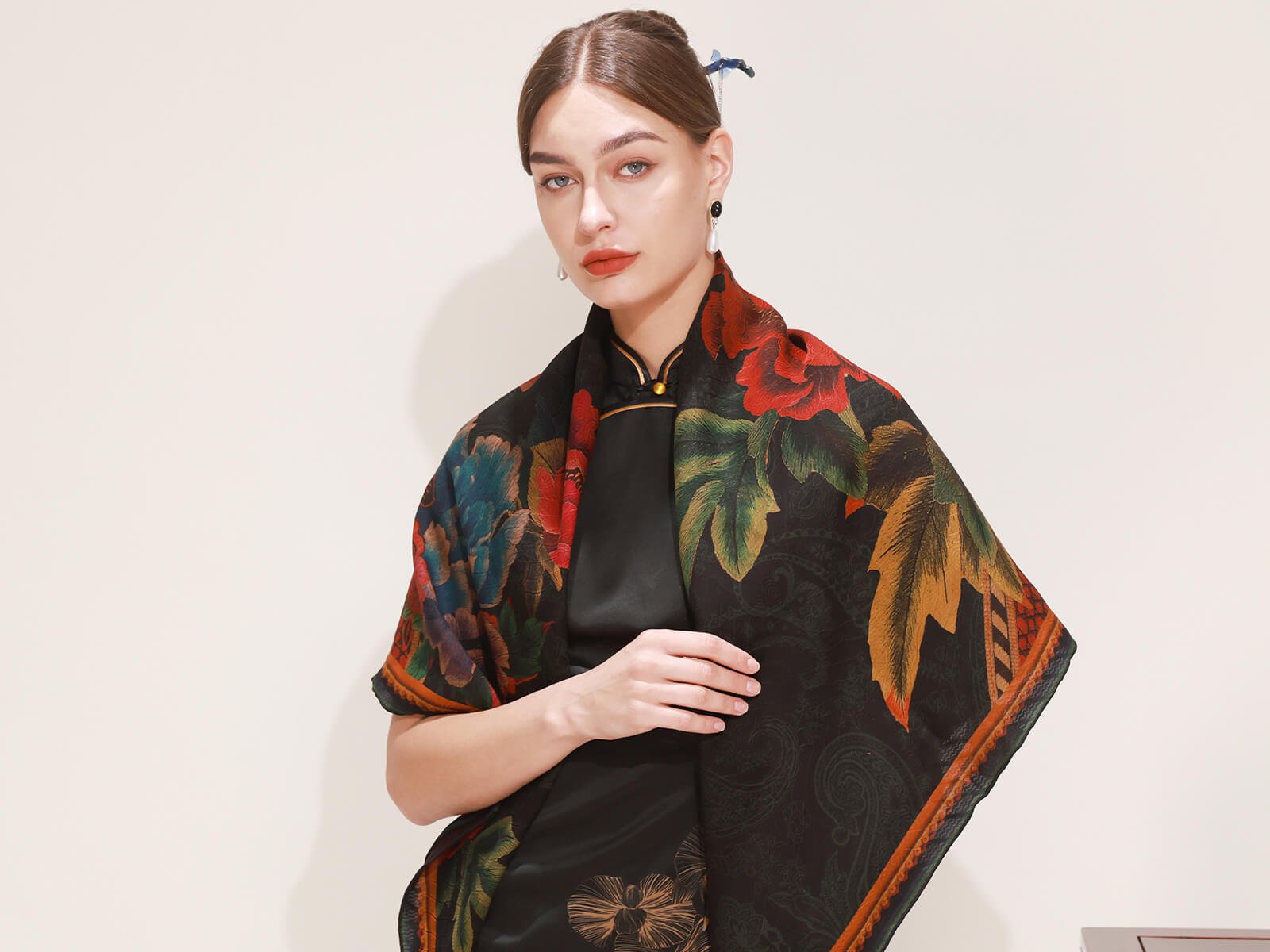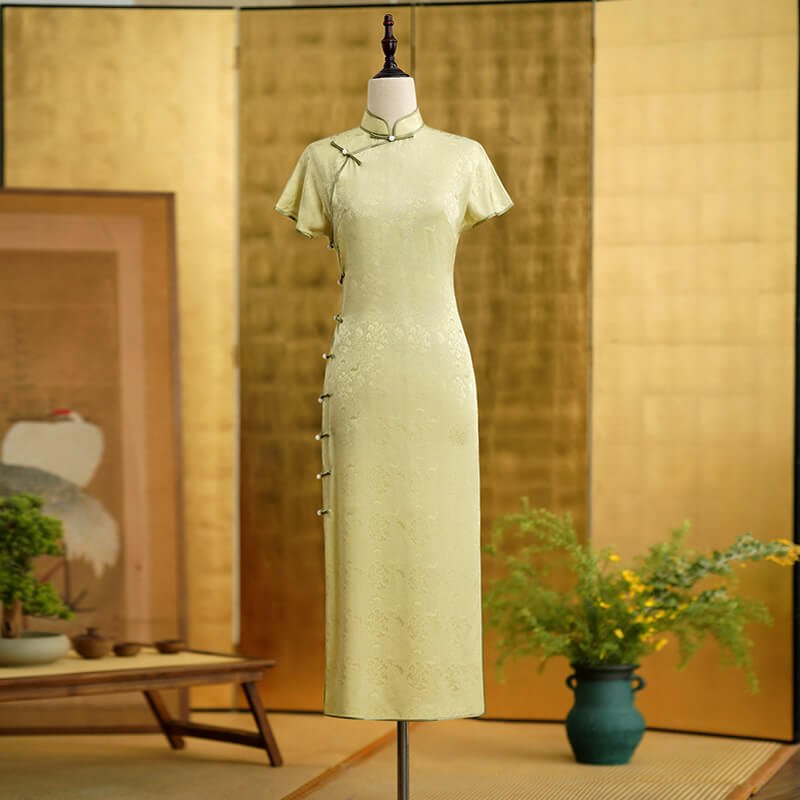
Key Points
- Raw Material Connection: Xiangyunsha silk is made from mulberry silk but undergoes unique plant dyeing and mud-coating processes to gain distinct properties.
- Production Process: Mulberry silk involves straightforward cocoon-to-fabric production, while Xiangyunsha requires complex “three washes, nine boils, eighteen suns” steps.
- Appearance and Texture: Mulberry silk offers varied colors and smooth softness; Xiangyunsha has a copper-black dual-tone and becomes softer with wear.
- Uses: Mulberry silk is versatile for various garments and home textiles; Xiangyunsha is often used for traditional Chinese attire like xiangyunsha silk cheongsam.
- Market Positioning: Xiangyunsha, due to its rarity and intricate craftsmanship, is positioned as a premium, often called “soft gold.”
What is Mulberry Silk?
Mulberry silk, derived from the silkworms (Bombyx mori) fed exclusively on mulberry leaves, is the most common and high-quality type of silk. Its production involves harvesting cocoons, boiling them to extract long silk filaments, and weaving them into fabric. Known for its softness, sheen, and durability, mulberry silk is a staple in luxury fashion, bedding, and home decor, prized for its comfort and versatility.
What is Xiangyunsha?
Xiangyunsha, also known as Gambiered Canton silk, is a rare silk fabric from Guangdong, China, with roots dating back to the 5th century. Starting with mulberry xiangyunsha silk, it’s dyed with gambier plant juice and coated with iron-rich Pearl River mud, creating a unique copper and black dual-tone. Its intricate production, limited by natural conditions, makes it a scarce, high-value fabric often used for cultural garments like cheongsams. Learn more about what is xiangyunsha silk.
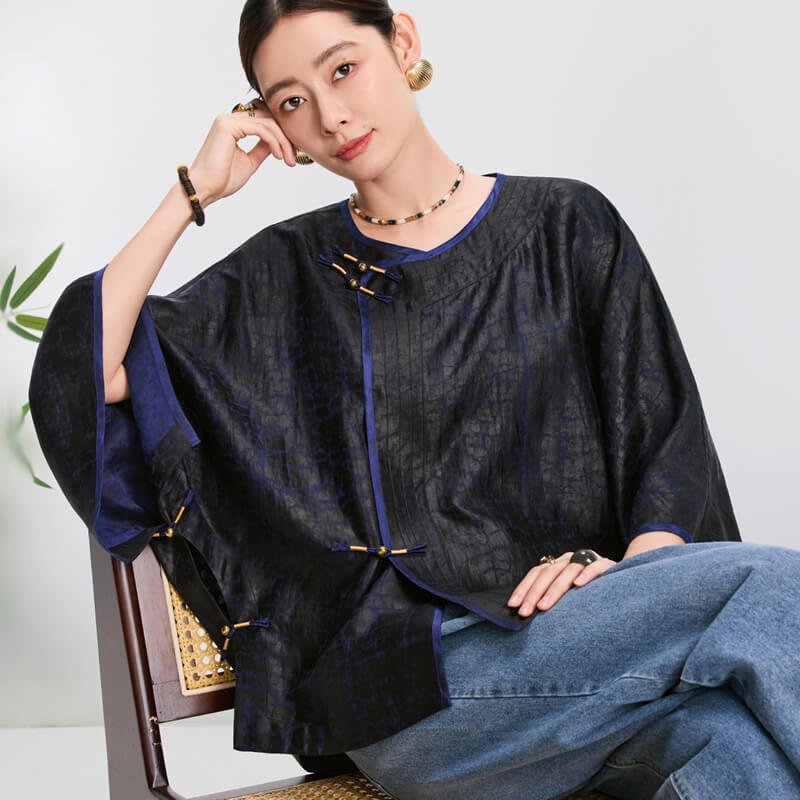
How Do They Differ?
While both originate from mulberry silk, Xiangyunsha’s specialized processing sets it apart in:
- Process: Mulberry silk is simpler; Xiangyunsha involves elaborate dyeing and mud treatments.
- Appearance: Mulberry silk has diverse colors; Xiangyunsha features a copper-black contrast.
- Texture: Mulberry silk is consistently soft; Xiangyunsha softens over time.
- Uses: Mulberry silk is broadly applied; Xiangyunsha focuses on traditional attire.
- Price: Xiangyunsha is pricier due to its rarity and craftsmanship.
Mulberry Silk: The Foundation of Silk Luxury
Mulberry silk, produced by silkworms (Bombyx mori) fed on mulberry leaves, is the gold standard of silk fabrics. Its production is relatively straightforward: cocoons are harvested, boiled to unravel long silk filaments, and then woven or knitted into fabric. This process yields a fabric that’s soft, smooth, and durable, often described as “a second skin” for its comfort. Mulberry silk’s natural sheen, lightweight feel, and ability to regulate temperature make it ideal for everything from high-end dresses and shirts to luxurious bedding and curtains. Its widespread availability and relatively affordable price point have made it a favorite for designers and consumers alike, offering versatility without sacrificing elegance.
Xiangyunsha: The Artisanal Marvel of Soft Gold
Shunde Xiangyunsha silk, or Gambiered Guangdong Silk, is a rare and exquisite silk hailing from Guangdong, China, with a history stretching back to the 5th century. It begins with mulberry silk but is transformed through a labor-intensive xiangyunsha silk production process that involves dyeing the silk with juice from the gambier plant (shu liang) and coating it with iron-rich mud from the Pearl River. This results in a striking copper hue on one side and black on the other, a hallmark of its artisanal beauty. The production, often referred to as “three washes, nine boils, and eighteen suns,” encompasses over 30 meticulous steps, taking months and relying on natural elements like sunlight and river mud.
The scarcity of Xiangyunsha stems from its complex process and environmental dependencies, earning it the moniker “soft gold.” Historically, it was a symbol of nobility, worn by elites or gifted to dignitaries, as noted by SinoCultural. Today, its cultural significance, cooling properties, and natural antibacterial qualities make it a prized choice for traditional Chinese garments like cheongsams and tang suits, as well as modern fashion pieces. At gambiered.com, our curated Xiangyunsha collection brings this ancient craft to a global audience, ensuring authenticity and quality.
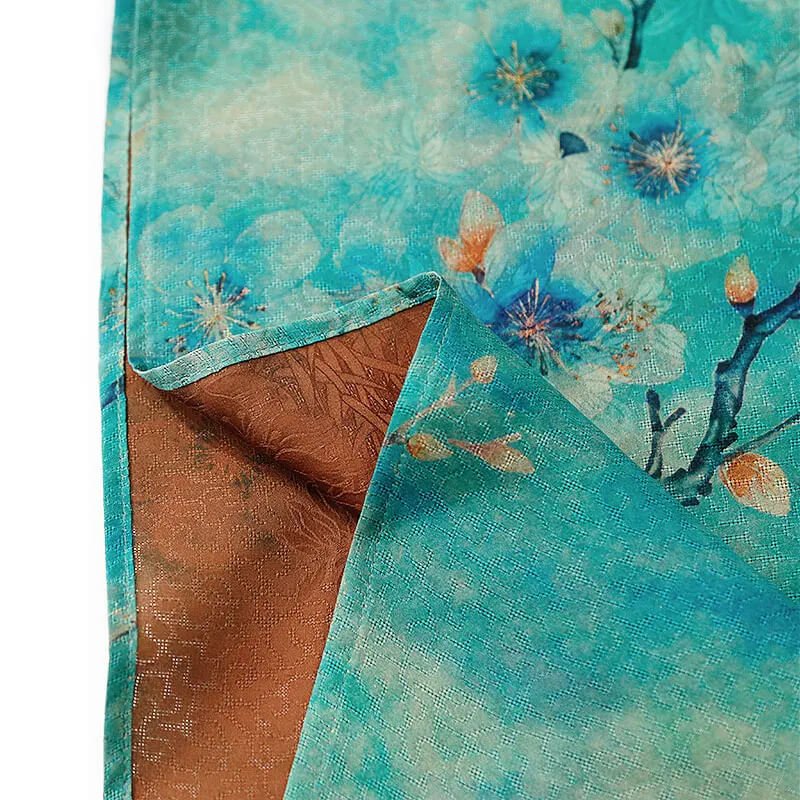
Key Differences Between Xiangyunsha and Mulberry Silk
Though both fabrics share a mulberry silk origin, Xiangyunsha’s unique processing creates distinct differences across several dimensions. For a deeper dive, check out our guide on the difference between xiangyunsha and mulberry silk. Here’s a detailed comparison to clarify what sets them apart:
Production Process
- Mulberry Silk: Involves harvesting cocoons, boiling to extract silk threads, and weaving into fabric. The process is efficient and scalable, allowing for mass production.
- Xiangyunsha: Starts with mulberry silk but adds complex steps like dyeing with gambier juice, coating with Pearl River mud, and multiple sun-drying sessions. The “three washes, nine boils, eighteen suns” process is time-consuming and limited by natural conditions, resulting in low yields.
Appearance
- Mulberry Silk: Can be dyed in a wide range of colors, offering a smooth, uniform look suitable for diverse designs.
- Xiangyunsha: Features a signature copper and black dual-tone, with slight natural variations from hand-dyeing that enhance its artisanal charm.
Texture and Feel
- Mulberry Silk: Consistently soft, smooth, and lightweight, often likened to “buttery silk.”
- Xiangyunsha: Initially structured due to mud coating, it softens with wear, developing a unique, supple texture dubbed “soft gold.”
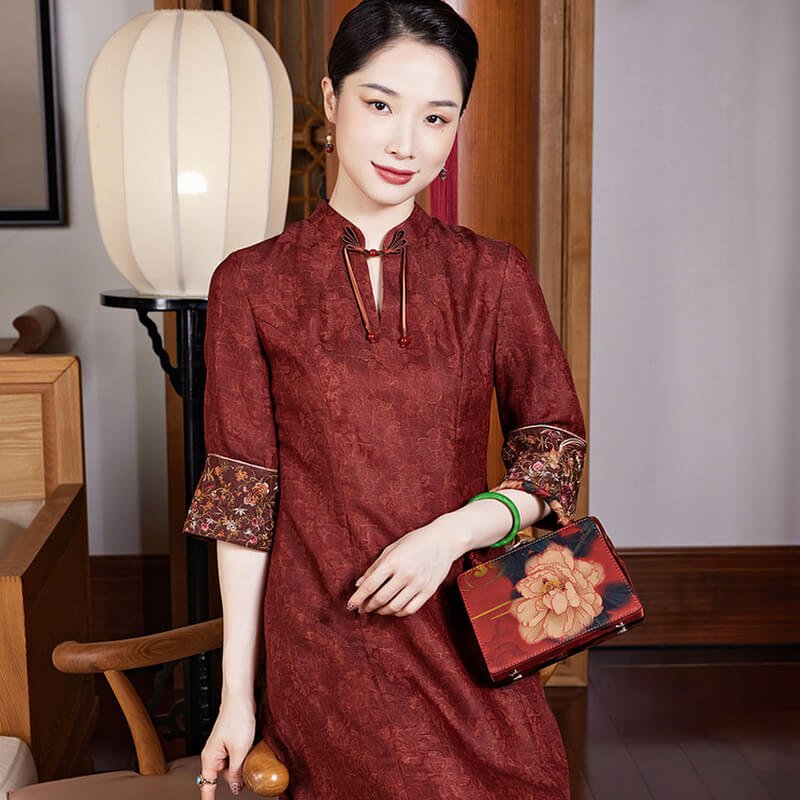
Uses
- Mulberry Silk: Highly versatile, used in fashion (dresses, shirts, scarves), bedding, home decor, and accessories.
- Xiangyunsha: Primarily used for traditional Chinese attire like cheongsams and tang suits, as well as artistic or cultural pieces, due to its heritage value.
Cultural Significance and Rarity
- Mulberry Silk: Luxurious but widely produced, lacking a specific cultural tie.
- Xiangyunsha: A Chinese intangible cultural heritage, its rarity and intricate craftsmanship make it a symbol of tradition, often reserved for special occasions or collectors.
Price
- Mulberry Silk: More affordable due to simpler production and higher availability.
- Xiangyunsha: Significantly more expensive because of its labor-intensive process and limited supply, often called “soft gold.”
| Feature | Mulberry Silk | Xiangyunsha |
|---|---|---|
| Raw Material | Mulberry silk | Mulberry silk (with specialized processing) |
| Process | Simple: harvest, boil, weave | Complex: dye, mud-coat, sun-dry |
| Appearance | Multi-colored, smooth | Copper-black dual-tone, natural variations |
| Texture | Soft and smooth | Initially structured, softens with wear |
| Uses | Fashion, bedding, decor | Traditional attire, artistic pieces |
| Price | More affordable | Expensive |
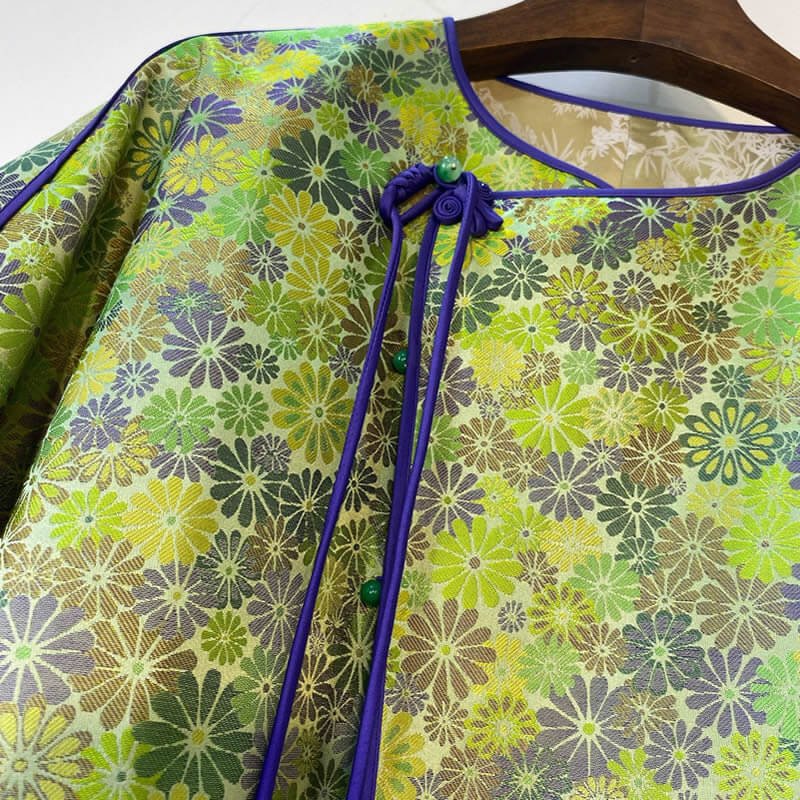
Why Choose Xiangyunsha Over Mulberry Silk?
Opting for Xiangyunsha isn’t just about buying fabric—it’s about embracing a piece of history and artistry. Its unique copper-black aesthetic, softening texture, and natural properties like antibacterial and cooling effects make it perfect for standout garments or heirloom pieces like a xiangyunsha silk dress. If you’re dressing for a cultural event, seeking a conversation starter, or want to invest in something rare, Xiangyunsha delivers unmatched value. At gambiered.com, we offer a range of authentic Xiangyunsha products, from elegant cheongsams to modern shirts, crafted to honor this centuries-old tradition. Explore our collection at visit our products. While mulberry silk is fantastic for everyday luxury, Xiangyunsha is the choice for those who crave exclusivity and a connection to Chinese heritage.
How to Identify Authentic Xiangyunsha
With Xiangyunsha’s rising popularity, ensuring authenticity is crucial. Our guide on how to identify xiangyunsha silk provides practical tips to spot the real deal:
- Color and Pattern: Authentic Xiangyunsha has a copper and black dual-tone, often with subtle natural variations from hand-dyeing.
- Texture: Should feel soft yet structured, with a denser weave that softens over time.
- Scent: May carry a faint natural odor from gambier dye, unlike synthetic fabrics.
- Burn Test: Real silk smells like burning hair and leaves fragile ash; synthetics smell like plastic and form hard residue.
- Label: Look for “100% mulberry silk” on tags; “100% Xiangyunsha” may indicate an issue.
- Source: Purchase from trusted sellers like gambiered.com, which sources directly from artisans using traditional methods. Have questions? contact us for assistance.

